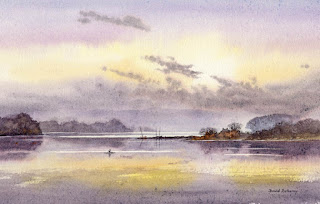This summer marks 40 years of my writing articles for Leisure Painter magazine, and the current issue (July 2021) contains an article celebrating this close relationship. Ingrid Lyon and her team are indeed lovely people to work with. The excellent Painters-online run by Leisure Painter and The Artist is also showing a film I recently made on how to paint a penguin, which you can see at https://www.painters-online.co.uk/tips-techniques/watercolour/articles/how-to-paint-a-penguin-in-watercolour/ This was done from an expedition to Chile many years ago, when I visited a penguin colony near Puntas Arenas on the way to the Andes.
I recently dropped some paintings in to the Waterfront Gallery in Milford Haven. It’s a lovely gallery on the quayside with plenty of parking and sketching space if you like painting boats and other things that bob about, so if you’re in or around Pembrokeshire do pop in if you have a moment.
This is part of one of the paintings I left at the gallery, showing huge Atlantic breakers hitting the cliffs at Linney Head in extremely wild seas. I achieved the white splashes by leaving that part as untouched paper, but wetting the area to float in the blue-grey colour of the cliffs to define the splashes wet-in-wet in a negative way. When the paper had dried I then sharpened up some of the edges with the blue-grey wash, thus creating a varied edge around the splash. Do be extremely careful if you go out on a day like this, as the sea can be really unforgiving!




